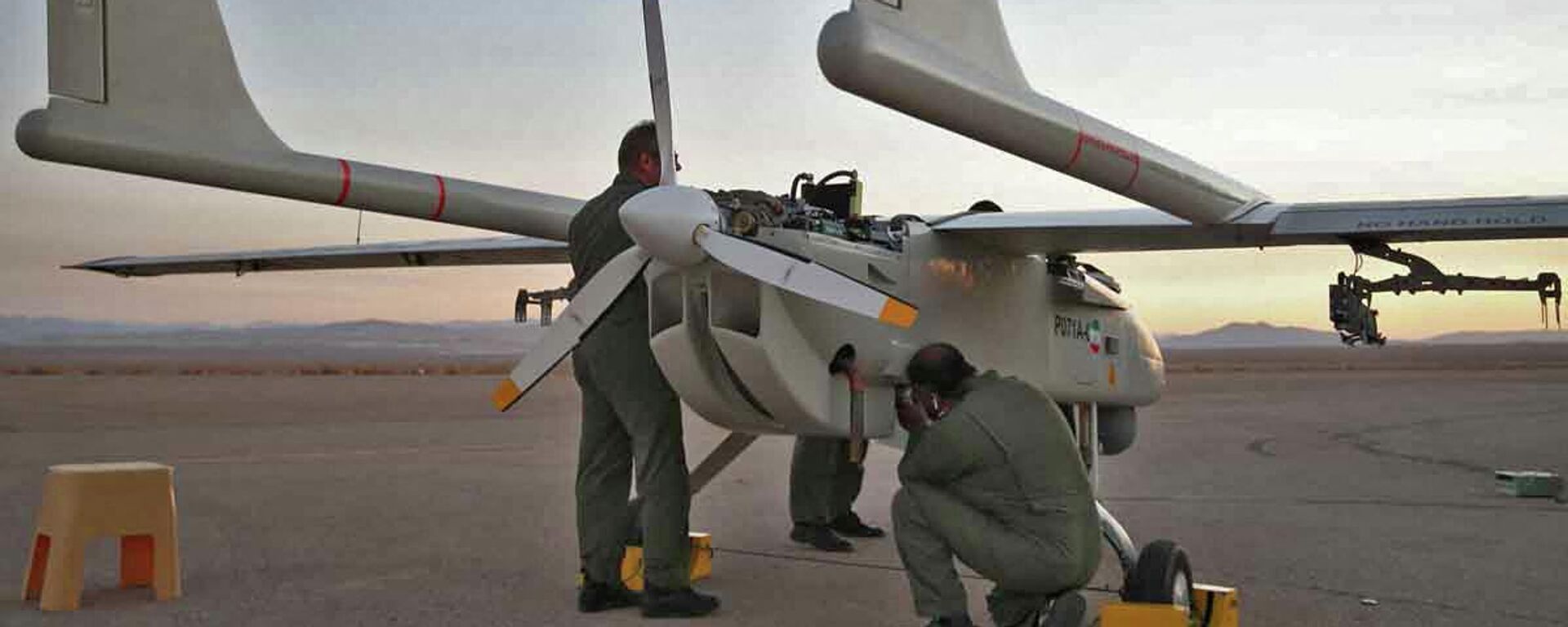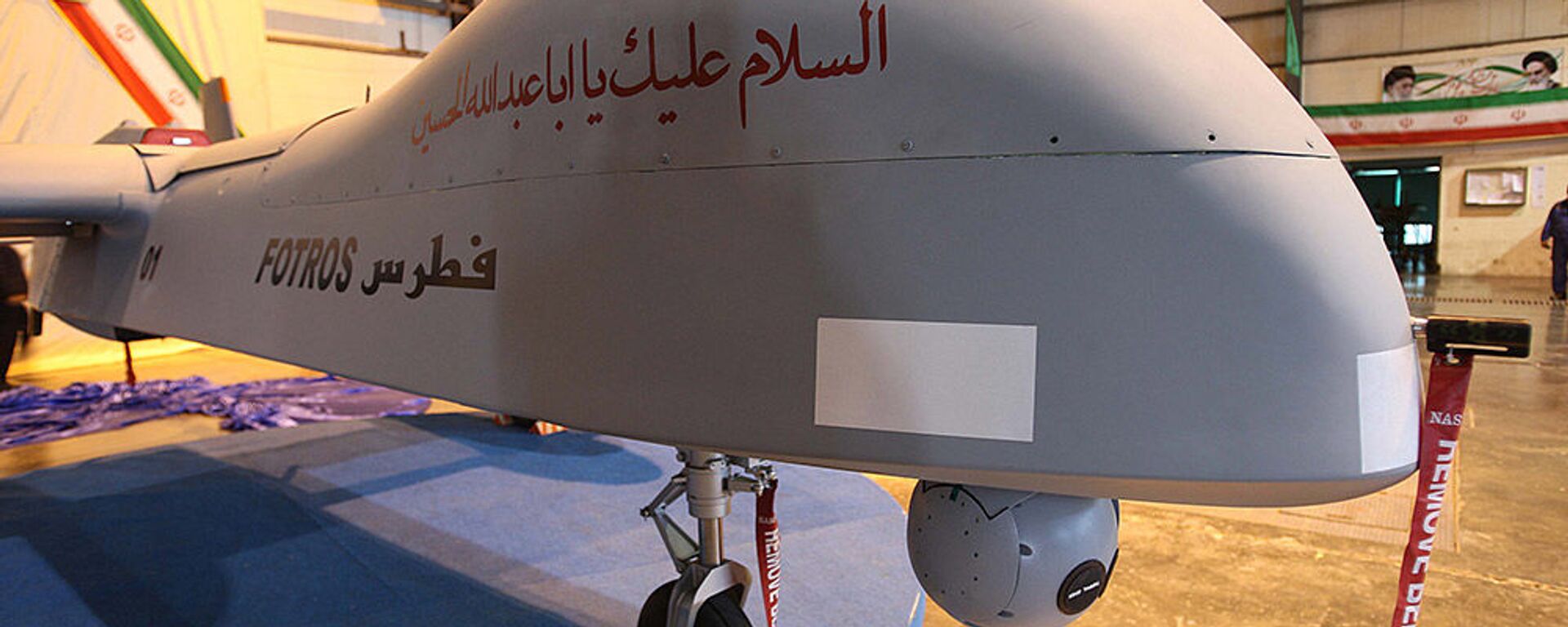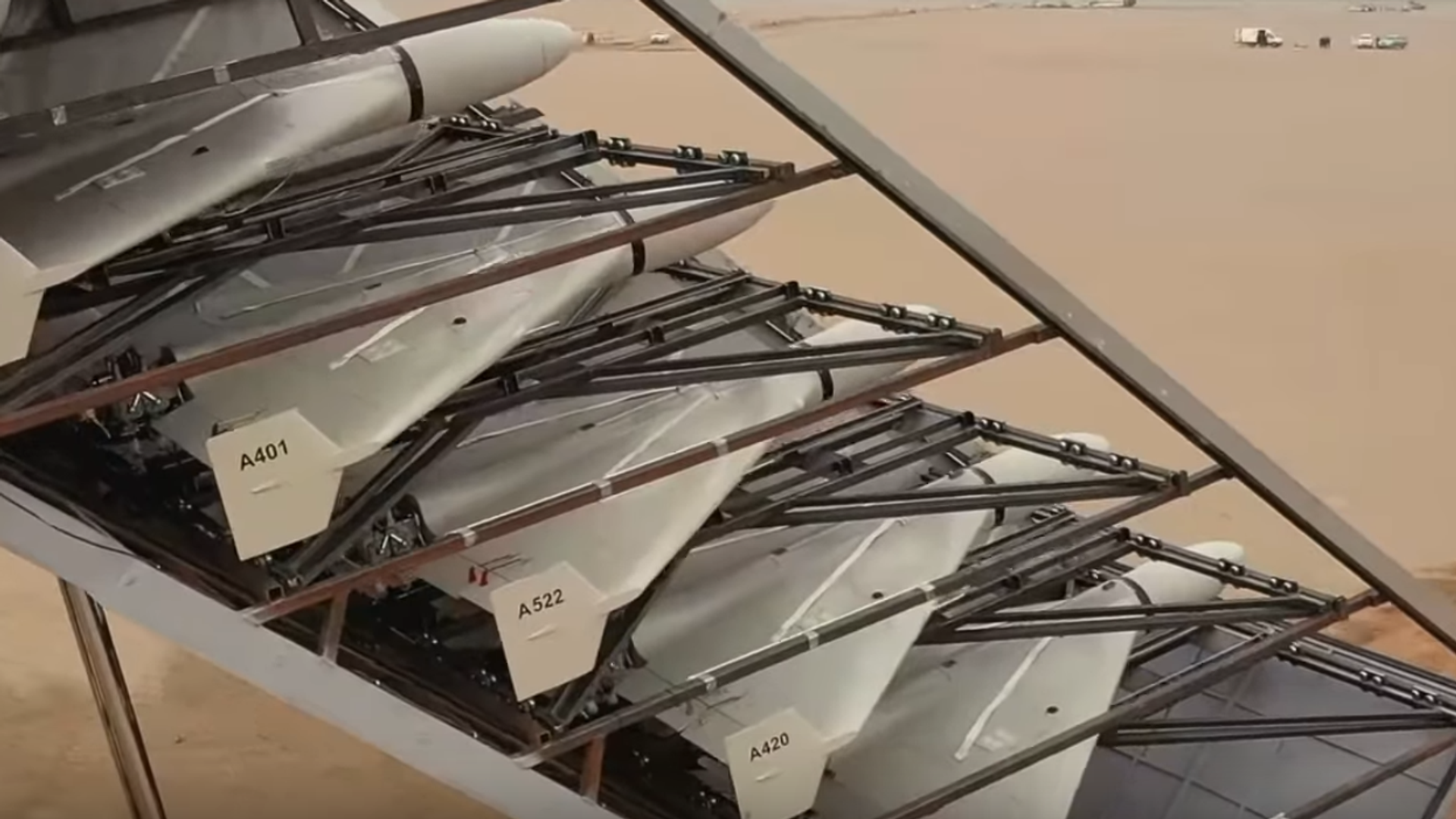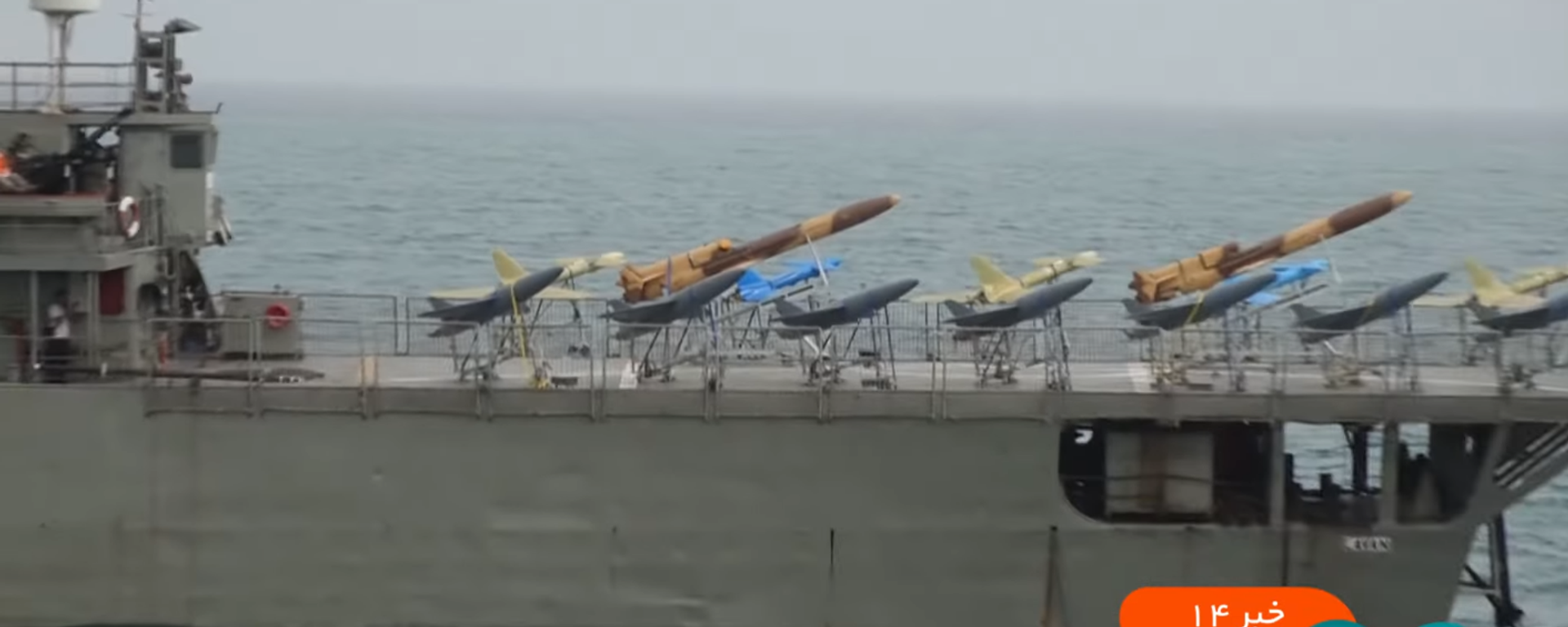https://sputnikglobe.com/20220907/irans-latest-advance-in-uav-technology-ai-powered-drones-1100508085.html
Iran’s Latest Advance in UAV Technology? AI-Powered Drones
Iran’s Latest Advance in UAV Technology? AI-Powered Drones
Sputnik International
The Islamic Republic has developed an impressive array of nearly three dozen varieties of attack, reconnaissance, and suicide strike drones over the past two... 07.09.2022, Sputnik International
2022-09-07T15:30+0000
2022-09-07T15:30+0000
2022-09-07T15:59+0000
military
drone
iran
artificial intelligence
ai
https://cdn1.img.sputnikglobe.com/img/07e6/09/07/1100507875_0:12:1246:713_1920x0_80_0_0_983183c05317dec21edf48f6fc11c2e0.png
Iran has equipped unmanned aerial vehicles with artificial intelligence technology, Islamic Revolutionary Guard Corps commander Hossein Salami has revealed.The commander did not provide any additional details about which drone models have been fitted with AI targeting assistance equipment, or whether or not the onboard electronics are a domestic development.Boasting of Iran’s status as a major world power in advanced military technology, including air defense equipment, Salami said that Iranian specialists have honed the manufacturing of modern weaponry to the point where it is “as easy for us as building bicycles.” The commander revealed that even “some superpowers” are cooperating with Iran and buying its weapons, but did not name names.Brig Gen Amir Ali Hajizadeh, commander of the IRGC’s Aerospace Forces, expanded slightly on Salami’s AI-related comments on Wednesday, telling attendees at a ceremony at the K.N. Toosi University of Technology in Tehran that Iran has already used AI in military operations.“Today, the enemy admits that Iran has air superiority after 80 years and has become an undisputed power, and according to some heads of Arab countries, the downing of the Global Hawk spy plane should become a turning point in the history of the region,” Hajizadeh added, referring to the shootdown of a stealthy US spy drone over the Strait of Hormuz in June 2019 using the Khordad 3, a medium-range mobile air defense system.Iran’s regular army and the IRGC have dropped the occasional hint about the use of AI in defense applications over the years. In 2021, Hajizadeh revealed that the country used the technology during large-scale drills in central Iran to attack the enemy from all sides and “infiltrate” enemy air defenses using autonomous suicide drones.While initially dismissing Iran’s military technology and spending years mocking and deriding the country’s military potential, Tehran’s adversaries have gradually come around to recognizing the country’s potential.Last year, War on the Rocks worryingly reported that the Islamic Republic’s “pursuit of autonomous weapons is no fanciful moonshot,” and that the country has “the resources necessary to follow through on their autonomous aspirations” to turn AI into a force multiplier in its asymmetric warfare strategy.Iran’s experience with drone technology goes back decades, with the country deploying the Mohajer-1 and Ababil-1 reconnaissance UAVs at the midpoint of the brutal Iran-Iraq War of 1980-1988. In the decades since, the Islamic Republic has built up its drone capabilities alongside the broader development of its military-industrial complex. The country received a little help from the US military in late 2011, when an RQ-170 flying wing-shaped spy drone was intercepted and commandeered by an Iranian cyberwarfare unit and brought safely to the ground. Iranian specialists studied the drone, and when Washington asked Tehran to return it, an Iranian company promised to send the White House miniature pink toy versions of it instead.Iran has built up an arsenal of at least 34 varieties of drones, ranging from small reconnaissance UAVs like the Hamaseh, to the Kaman 22, a wide-body combat drone with the capability to carry up to 300 kg of explosives. The country has also experimented with rocket-powered suicide drones like the Karrar. As for the Mohajer UAV series that started it all, it is currently in its sixth iteration, and capable of engaging in both surveillance and precision missile strikes. Iran showed off its drones’ deadly aptitude late last year, when it simulated an attack on Israel’s top nuclear weapons research center as a warning to Tel Aviv.
https://sputnikglobe.com/20220825/iran-holds-major-military-drills-featuring-150-new-drones-1099974169.html
https://sputnikglobe.com/20220822/world-powers-want-irans-military-tech-top-commander-says-1099869734.html
https://sputnikglobe.com/20220715/joe-welcome-iran-unveils-new-ship-launched-drone-capabilities-amid-bidens-mideast-tour-1097361451.html
iran
Sputnik International
feedback@sputniknews.com
+74956456601
MIA „Rossiya Segodnya“
2022
News
en_EN
Sputnik International
feedback@sputniknews.com
+74956456601
MIA „Rossiya Segodnya“
Sputnik International
feedback@sputniknews.com
+74956456601
MIA „Rossiya Segodnya“
drone, iran, artificial intelligence, ai
drone, iran, artificial intelligence, ai
Iran’s Latest Advance in UAV Technology? AI-Powered Drones
15:30 GMT 07.09.2022 (Updated: 15:59 GMT 07.09.2022) The Islamic Republic has developed an impressive array of nearly three dozen varieties of attack, reconnaissance, and suicide strike drones over the past two decades, with the country’s experience with the technology going back to the mid-1980s.
Iran has equipped unmanned aerial vehicles with artificial intelligence technology, Islamic Revolutionary Guard Corps commander Hossein Salami has revealed.
“Today, the accuracy of our weapons in hitting fixed and mobile targets is one hundred percent and our drones can target any location by using artificial intelligence,” Salami
said, speaking at a university event in the northeastern city of Mashhad on Tuesday.
The commander did not provide any additional details about which drone models have been fitted with AI targeting assistance equipment, or whether or not the onboard electronics are a domestic development.
Boasting of Iran’s status as a major world power in advanced military technology, including air defense equipment, Salami said that Iranian specialists have honed the manufacturing of modern weaponry to the point where it is “as easy for us as building bicycles.” The commander revealed that even
“some superpowers” are cooperating with Iran and buying its weapons, but did not name names.
Brig Gen Amir Ali Hajizadeh, commander of the IRGC’s Aerospace Forces, expanded slightly on Salami’s AI-related comments on Wednesday, telling attendees at a ceremony at the K.N. Toosi University of Technology in Tehran that Iran has already used AI in military operations.
“If we have turned from an importer of barbed wire into an exporter of technology, and have defeated the enemy at a distance of more than 1,000 km with artificial intelligence, it is because of cooperation between the university and military departments,” Hajizadeh
said. The officer did not elaborate on what systems he was talking about.

25 August 2022, 14:45 GMT
“Today, the enemy admits that Iran has air superiority after 80 years and has become an undisputed power, and according to some heads of Arab countries, the downing of the Global Hawk spy plane should become a turning point in the history of the region,” Hajizadeh added, referring to the
shootdown of a stealthy US spy drone over the Strait of Hormuz in June 2019 using the Khordad 3, a medium-range mobile air defense system.
Iran’s regular army and the IRGC have dropped the occasional hint about the use of AI in defense applications over the years. In 2021, Hajizadeh
revealed that the country used the technology during large-scale drills in central Iran to attack the enemy from all sides and “infiltrate” enemy air defenses using autonomous suicide drones.
While initially dismissing Iran’s military technology and spending years
mocking and
deriding the country’s military potential, Tehran’s adversaries have gradually come around to recognizing the country’s potential.

22 August 2022, 16:45 GMT
Last year, War on the Rocks worryingly
reported that the Islamic Republic’s “pursuit of autonomous weapons is no fanciful moonshot,” and that the country has “the resources necessary to follow through on their autonomous aspirations” to turn AI into a force multiplier in its asymmetric warfare strategy.
Iran’s experience with drone technology goes back decades, with the country deploying the Mohajer-1 and Ababil-1 reconnaissance UAVs at the midpoint of the brutal Iran-Iraq War of 1980-1988. In the decades since, the Islamic Republic has built up its drone capabilities alongside the broader development of its military-industrial complex. The country received a little help from the US military in late 2011, when an RQ-170 flying wing-shaped spy drone was intercepted and commandeered by an Iranian cyberwarfare unit and brought safely to the ground. Iranian specialists studied the drone, and when Washington asked Tehran to return it, an Iranian company promised to send the White House miniature pink toy versions of it instead.
Iran has built up an arsenal of at least 34 varieties of drones, ranging from small reconnaissance UAVs like the Hamaseh, to the Kaman 22, a wide-body combat drone with the capability to carry up to 300 kg of explosives. The country has also experimented with rocket-powered suicide drones like the Karrar. As for the Mohajer UAV series that started it all, it is currently in its sixth iteration, and capable of engaging in both surveillance and precision missile strikes. Iran showed off its drones’ deadly aptitude late last year, when it simulated an attack on Israel’s top nuclear weapons research center as a warning to Tel Aviv.





